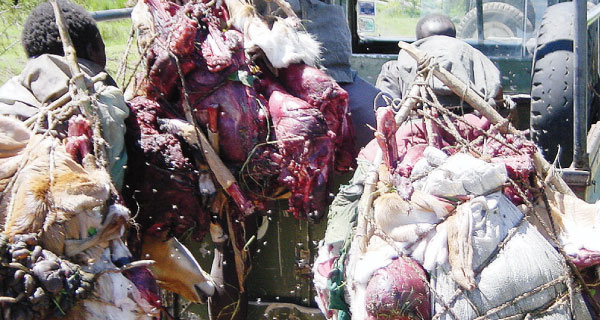×
The Standard e-Paper
Kenya’s Boldest Voice
 |
| Poachers who killed an entire herd of impala in Masai Mara are taken into custody by KWS officials. [PHOTO: COURTESY] |
By JOE KIARIE
KENYA: Do you know the source of the meat you hungrily ate last evening? Were you convinced it was exactly the beefsteak you ordered at your favourite eatery or local butchery?